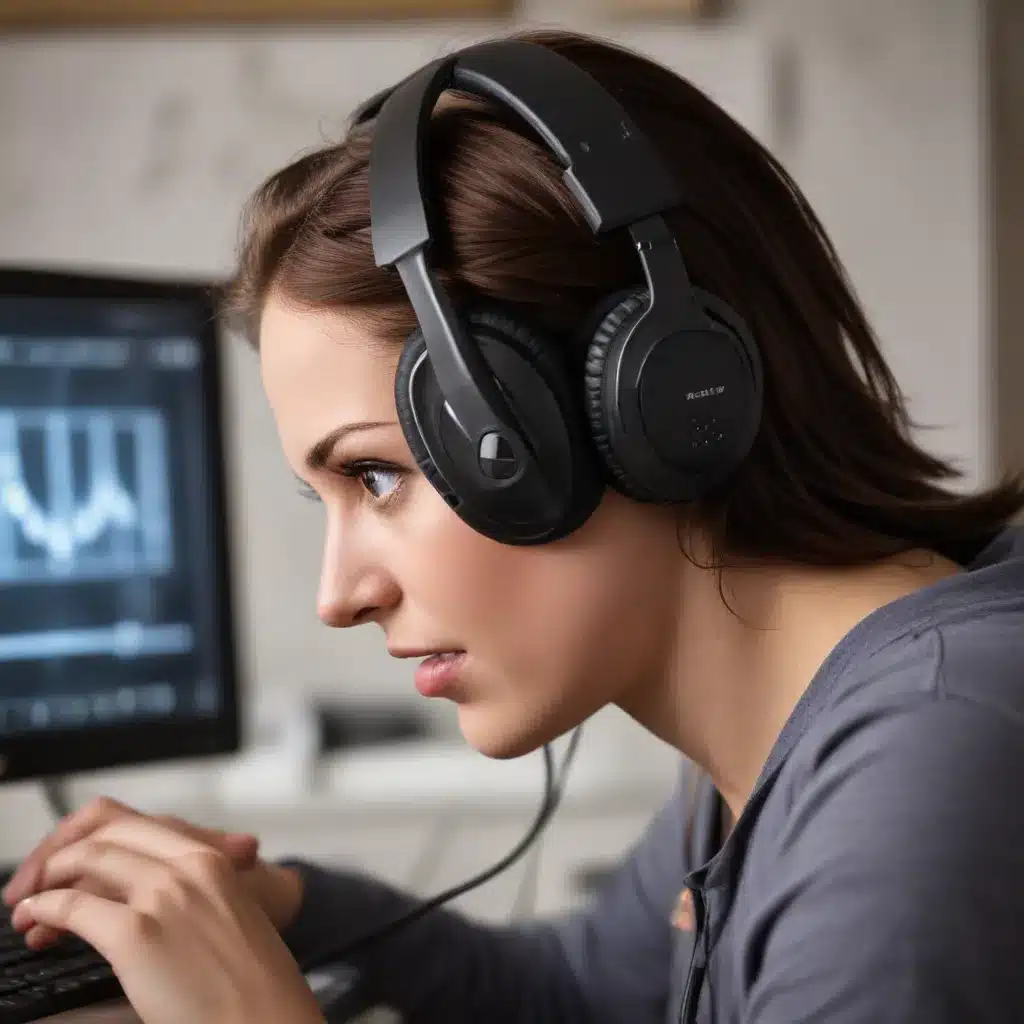
Audio problems on your PC can be incredibly frustrating, especially when you’re trying to watch a video, attend an important meeting, or listen to your favorite music. Fortunately, most sound issues can be resolved by following a systematic troubleshooting process. As an experienced IT professional, I’ll guide you through a comprehensive set of steps to help you identify and fix common sound problems on your Windows computer.
Sound Device Configuration
The first step is to ensure your audio devices are properly configured. If you have multiple audio output options, such as speakers, headphones, or HDMI-connected devices, make sure the correct one is selected as the default.
To check your default audio device:
- Click the speaker icon on the taskbar and select the desired output device from the list.
- If the device you want to use isn’t listed, go to Start > Settings > System > Sound and select the Playback tab. Here, you can set the default device and adjust individual volume levels.
If your audio device isn’t showing up in the list, it may be disabled. Go to the Sound settings, select the Playback or Recording tab, right-click the device, and ensure the “Disable” option is not checked.
Audio Settings Optimization
Sometimes, audio enhancements or special effects can cause issues with sound quality or volume. Try disabling these features to see if it resolves the problem.
- Open the Control Panel and go to Hardware and Sound > Sound.
- On the Playback tab, right-click the default audio device and select Properties.
- Navigate to the Enhancements tab and uncheck “Enable audio enhancements” or “Enable sound effects.”
- Apply the changes and test your audio.
If you have multiple default devices, repeat this process for each one.
Drivers and Updates
Hardware problems, including outdated or malfunctioning drivers, can also lead to sound issues. Let’s ensure your audio drivers are up to date:
- Open the Device Manager by searching for it in the Windows search bar.
- Expand the “Sound, video and game controllers” section and locate your audio device.
- Right-click the device and select “Update driver.” Choose “Search automatically for updated driver software” and follow the prompts.
If Windows can’t find a new driver, visit the manufacturer’s website and download the latest driver for your specific audio hardware.
If updating the driver doesn’t work, try uninstalling it instead. Right-click the audio device in Device Manager, select “Uninstall device,” and check the “Delete the driver software for this device” option. Restart your PC, and Windows will automatically reinstall the driver.
Speaker Troubleshooting
If you’re experiencing problems with your speakers or headphones, start by checking the physical connections. Ensure all cables are securely plugged in and that the power is turned on for any external audio devices.
Next, check the volume settings. Make sure the mute button isn’t engaged and that the volume is turned up, both on your device and in your media player or operating system settings.
If you’re using USB or HDMI-connected speakers or headphones, try connecting them to a different port. It’s possible the original port is malfunctioning.
Media Player Troubleshooting
Issues with specific media players or applications can also cause sound problems. Try playing audio through a different media player or web browser to isolate the problem.
If the audio works in other applications but not in a particular program, the issue may be related to that software’s settings or configuration. Consult the program’s documentation or support resources for troubleshooting steps.
Volume and Mute Checks
Sometimes, the culprit behind sound issues can be as simple as an unintended mute or volume change. Open the Volume Mixer by right-clicking the speaker icon on the taskbar and selecting “Open Volume Mixer.”
Check that the volume sliders for your audio devices are not muted or set too low. Also, ensure that no individual application or system process has its volume inadvertently lowered or muted.
Microphone Troubleshooting
If you’re having issues with your microphone, start by checking the physical connection and ensuring it’s properly plugged in. Then, check the microphone settings:
- Go to Start > Settings > Privacy & Security > Microphone.
- Make sure the “Microphone access” toggle is turned on, both for the device and any specific apps that require microphone access.
- In the “Choose which Microsoft Store apps can access your microphone” section, ensure the toggle is enabled for the apps you need to use the mic with.
If the microphone settings are correct, try adjusting the volume and gain levels in your operating system’s sound settings or the audio application you’re using.
Advanced Audio Troubleshooting
If you’ve tried the basic troubleshooting steps and are still experiencing sound problems, there are a few more advanced techniques you can try:
-
Check System Logs and Diagnostics: Open the Event Viewer and look for any error messages or warnings related to your audio hardware or drivers. This can help identify the root cause of the issue.
-
Utilize Third-Party Audio Software: Consider installing a third-party audio management tool, such as Equalizer APO or EqualizerAPO, which can provide more granular control over your audio settings and help resolve compatibility issues.
-
Consider Hardware Replacement: If you’ve exhausted all software-based troubleshooting options and are still experiencing persistent sound problems, the issue may be related to a hardware failure. In this case, you may need to replace the faulty audio component, such as the sound card or motherboard.
Remember, if you’re ever unsure or feel uncomfortable attempting any of these advanced troubleshooting steps, it’s always best to consult with a professional IT technician who can properly diagnose and resolve the issue.
By following the steps outlined in this guide, you’ll be well on your way to identifying and fixing sound problems on your PC. If you need further assistance, be sure to visit ITFix.org.uk for additional resources and expert support.












